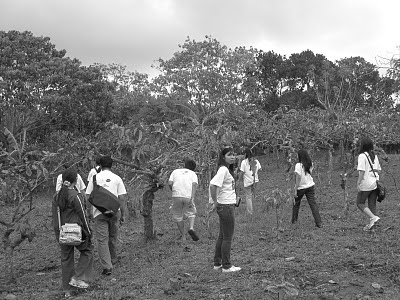I was planning on going to Anawangin since 2008. And it was only on Valentines' weekend of this year that I was finally able to see the beauty and mystery of the famous beach in San Antonio Zambales.
It was amazingly mysterious how the pine trees got to live in a not-so-cold climate such as the beach shores of Anawangin. You normally see these trees in Baguio while strolling around Camp John Hay, but to see such trees living in the hot beach sides of Anawangin is really a marvelous site. This is one of the major highlights of this cove, making it a talk-of-the-town among photgraphers and travelers.
When I saw it on February 13, it was no longer as mysterious as before. This is probably because a lot of campers have already discovered the beauty of Anawangin. People have already flocked the Pine-tree-rich cove. Campers and photographers hovered the vicinity, while avid sun bathers and swimmers gathered in the shores.
Well we can't blame them for coming because this is one of the very few quality beach destinations near Manila. If you want a good beach you need to travel by plane or by boat. But this one is just a 3-hour drive away, especially now that the SCTEX has been opened. Also, going to Anawangin is relatively cheap, with jsut a little over P2,000 as your budget, all in.
Of course I wouldn't want to waste the opportunity to take pictures of Anawangin's beauty. I took a few pictures using my handy NSLR (Not SLR):

Pine Trees!

Anawangin Stream

Bach Front

7-Eleven Anawangin Branch

The Anawangers: Emman, Paola, Maan, Grape, Joan, Me

The Anawangin Swamplands

A boatman rests under a very young pine tree

Happy campers under the pine trees

Boat ride to the Cove
Fine white sand, pine trees, urban legends. These are just few of the reasons why Anawangin Cove in San Antonio, Zambales is one destination hotspot in the country today. Thanks to Emman and his F21 Photography Club buddies for tagging us along and using us as subjects. Good choice pare! :)








































